


Understanding The Basics

Gluten-containing foods are a significant part of the modern diet, but their impact on our health can vary widely depending on individual factors. In recent years, gluten has garnered significant attention due to its association with various health conditions, particularly celiac disease and non-celiac gluten sensitivity. In this article, we explore the fundamentals of gluten-containing foods, their sources, and their role in our diets.
What Is Gluten?
Gluten is a protein composite made up of two primary proteins, glutenin and gliadin, found in various grains, most notably wheat, barley, and rye. These proteins give dough its elasticity and help bread and other baked goods rise. While gluten is a staple in many culinary creations, it can pose health challenges for some individuals.
Sources Of Gluten
Wheat: Wheat is one of the most abundant sources of gluten in our diets. It's used in a wide range of products, including bread, pasta, pastries, and cereals.
Barley: Barley contains gluten and is often used in soups, stews, and as a flavoring in malted products like beer.
Rye: Rye is another grain containing gluten, primarily used in bread and some alcoholic beverages.
Triticale: Triticale is a hybrid of wheat and rye and also contains gluten.
Common Gluten-Containing Foods
Bread And Baked Goods: Wheat-based bread, pastries, and cakes are rich in gluten.
Pasta: Traditional wheat pasta is a gluten-containing staple.
Cereals: Many breakfast cereals are made from gluten-containing grains, though gluten-free alternatives are available.
Beer: Most beers are brewed with barley or wheat, making them a source of gluten.
Processed Foods: Gluten can hide in various processed foods, from salad dressings to sauces, and even some candies.
Pizza: Pizza crust is traditionally made from wheat dough, but gluten-free options are widely available.
Flour And Breading: Flour derived from wheat is used for breading, thickening, and in baking.
Health Considerations
For the vast majority of people, gluten-containing foods are a safe and nutritious part of their diets. However, for those with celiac disease, an autoimmune disorder, consuming gluten can have severe health consequences, as it triggers an immune response leading to damage in the small intestine.
Non-celiac gluten sensitivity is another condition where individuals experience adverse reactions to gluten without the autoimmune response seen in celiac disease. The symptoms can range from digestive issues to headaches and fatigue.
It's essential for individuals with these conditions to avoid gluten-containing foods completely, but it's also vital for those who don't have these conditions to understand the role of gluten in their diets. Gluten-free alternatives and labels are readily available, making it easier for individuals to make informed choices about their food.
Gluten-containing foods are a fundamental part of our diets, providing the foundation for various culinary delights. While they offer nourishment and taste to most, it's crucial to be mindful of gluten if you have celiac disease or non-celiac gluten sensitivity. For everyone else, understanding the role of gluten in your diet and its alternatives can lead to a healthier and more informed approach to nutrition.
A Culinary Revolution For Health And Sustainability
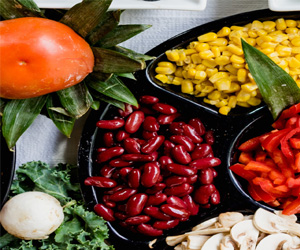 Plant-based cooking respects cultural diversity and inclusivity, making it accessible to people from all walks of life. It seamlessly integrates with a plethora of global culinary traditions, enabling the preparation of familiar dishes and exotic creations. Whether you're a fan of Mediterranean cuisine, Asian flavors, or the richness of Indian spices, plant-based cooking offers a world of gastronomic possibilities.
Plant-based cooking respects cultural diversity and inclusivity, making it accessible to people from all walks of life. It seamlessly integrates with a plethora of global culinary traditions, enabling the preparation of familiar dishes and exotic creations. Whether you're a fan of Mediterranean cuisine, Asian flavors, or the richness of Indian spices, plant-based cooking offers a world of gastronomic possibilities.
Health And Well-being
Plant-based cooking for all focuses on nourishing the body and promoting well-being. These diets are known to reduce the risk of chronic diseases, such as heart disease and diabetes, and can contribute to weight management and overall vitality. Plant-based foods are rich in essential nutrients, vitamins, minerals, and antioxidants that support physical and mental health.
Eco-Friendly And Sustainable
Choosing plant-based options has far-reaching benefits for the environment. Plant-based diets have a significantly lower carbon footprint compared to diets that rely heavily on animal agriculture.




Crafting The Perfect Liquid Symphony
 Latte Art: A Visual Symphony
Latte Art: A Visual Symphony
Latte art, the most recognizable form of espresso artistry, is a visual symphony that unfolds in your cup. Baristas use steamed milk to create intricate designs on the surface of espresso-based beverages, such as lattes and cappuccinos. Hearts, tulips, rosettes, and swans are just a few of the designs that baristas can craft with a steady hand and a keen eye.
Creating latte art is a delicate process that requires the perfect balance of milk and espresso. The milk must be steamed to the right temperature and frothed to achieve the ideal microfoam. The barista then pours the milk into the espresso, using a combination of pouring technique and wrist movement to shape the design. The result is not only visually stunning but also enhances the overall coffee-drinking experience.
Espresso Machine Mastery
Behind every visually striking latte art design lies a skilled barista who has mastered the espresso machine. The espresso machine, with its precise control over temperature and pressure, is the conductor's wand in this symphony of flavors and aesthetics.
A Tapestry Of History, Diversity, And Tradition
 Cuisine And Culinary Traditions: Mediterranean cuisine is renowned worldwide for its health benefits and delicious flavors. It reflects the region's emphasis on fresh, seasonal ingredients, such as olive oil, fruits, vegetables, legumes, and grains. Dishes vary from country to country, but common ingredients and culinary techniques, such as grilling, roasting, and the use of aromatic herbs, unite the Mediterranean palate. Meals are often shared with loved ones, emphasizing the social aspect of dining.
Cuisine And Culinary Traditions: Mediterranean cuisine is renowned worldwide for its health benefits and delicious flavors. It reflects the region's emphasis on fresh, seasonal ingredients, such as olive oil, fruits, vegetables, legumes, and grains. Dishes vary from country to country, but common ingredients and culinary techniques, such as grilling, roasting, and the use of aromatic herbs, unite the Mediterranean palate. Meals are often shared with loved ones, emphasizing the social aspect of dining.
Art And Architecture: Mediterranean culture has produced some of the most stunning and enduring works of art and architecture. Greek and Roman architecture have left indelible marks on the region, and medieval influences can be seen in the cathedrals and fortresses of coastal towns. Iconic artistic traditions like mosaic work, painting, and pottery continue to flourish in Mediterranean communities.
Language Diversity: The Mediterranean region is a linguistic mosaic. Numerous languages, dialects, and scripts are spoken and written throughout the region, reflecting its rich cultural diversity.
A Guide To Healthy And Inclusive Eating
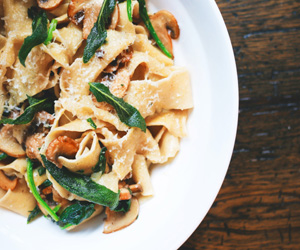 Religious And Cultural Practices: Many people adhere to specific dietary guidelines dictated by their religious beliefs or cultural traditions. For example, Muslims observe halal dietary laws, while Hindus may avoid beef due to religious beliefs.
Religious And Cultural Practices: Many people adhere to specific dietary guidelines dictated by their religious beliefs or cultural traditions. For example, Muslims observe halal dietary laws, while Hindus may avoid beef due to religious beliefs.
Health And Lifestyle Choices: Some people adopt dietary restrictions as a part of a healthy lifestyle. This includes vegetarianism, veganism, or gluten-free diets, often motivated by environmental concerns, animal welfare, or gluten-related health issues like celiac disease or gluten sensitivity.
Medical Conditions: Certain medical conditions, such as diabetes, require dietary restrictions to manage blood sugar levels effectively. Patients with kidney disease may need to limit their potassium and phosphorus intake.
Motivations Behind Dietary Restrictions
Health: Many dietary restrictions are motivated by health considerations. For example, a low-sodium diet can help manage high blood pressure, while a low-carb diet can be beneficial for individuals with diabetes.



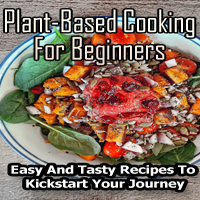

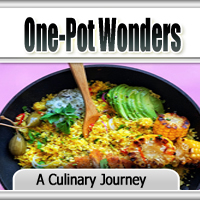
The Power Of Essential Vitamins
 Vitamin E (Tocopherol): As an antioxidant, vitamin E helps protect cells from damage and supports skin and eye health. It's found in nuts, seeds, and vegetable oils.
Vitamin E (Tocopherol): As an antioxidant, vitamin E helps protect cells from damage and supports skin and eye health. It's found in nuts, seeds, and vegetable oils.
Vitamin K (Phylloquinone): Vitamin K is essential for blood clotting and bone metabolism. Dark leafy greens and broccoli are rich sources.
The Importance Of Balanced Vitamin Intake
Balancing your intake of essential vitamins is critical to maintaining overall health and well-being. An unbalanced diet that lacks these essential nutrients can lead to vitamin deficiencies, which are associated with a variety of health issues. On the other hand, excessive intake of some vitamins can have adverse effects. Striving for a varied diet that includes a wide array of nutrient-rich foods is the best approach.
Supplements: A Complementary Strategy
In cases where dietary intake of essential vitamins is insufficient or when specific medical conditions or dietary restrictions apply, supplements can be a valuable addition to your routine. However, it's important to consult with a healthcare professional before starting any supplementation regimen to avoid overconsumption, which can be harmful.
A Culinary Journey Through Your Backyard
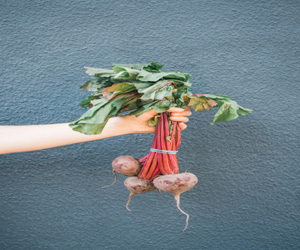 Flavorful Benefits:
Flavorful Benefits:
One of the most immediate and compelling benefits of homegrown flavors is the enhancement of taste. Here are a few reasons why homegrown produce tastes better:
Ripeness: Homegrown produce is harvested when it's perfectly ripe, ensuring that you experience the fullest, most vibrant flavors.
Nutrient Density: The time and care you invest in your homegrown produce can lead to higher nutrient content, contributing to more intense and wholesome flavors.
Variety: You have the freedom to choose a wide variety of fruits, vegetables, and herbs that may not be available at your local grocery store, diversifying your palate.
Unique Varietals: Experimenting with different heirloom or unusual plant varieties can lead to exceptional and distinctive flavors that are hard to find elsewhere.
A Sustainable Choice: Homegrown flavors align with the principles of sustainability and environmental responsibility. When you grow your own produce, you reduce your carbon footprint, as there are no transportation or packaging requirements. Additionally, you have the flexibility to practice organic and eco-friendly gardening, reducing the use of harmful chemicals and conserving resources.